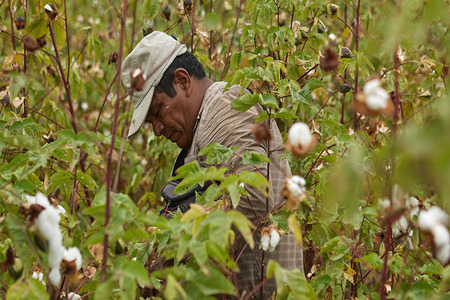
Bangladesh to remain major consumer of cotton in 2016-17
YarnsandFibers News Bureau 2016-10-05 17:01:00 – BangladeshAccording to reports, Bangladesh is expected to remain the world’s largest consumer of cotton during the current year 2016-17, a growth of 10% in terms of volume to 1.2 million tons.
After Bangladesh, Vietnam is the second largest consumer of cotton at 1.1 million tons with 15% increase in growth.
In 2016/17, global cotton consumption is forecast to remain unchanged from 2015/16 at 23.8 million tonnes, but is projected to exceed production by 1.3 million tonnes. The consumption was 23.78 million tonnes in 2015/16 and 24.20 million tonnes in 2014/15. The production was 21.10 million tonnes in 2015/16 and 26.20 million tonnes in 2014/15.
As a result, world stocks are projected to decline by 7.0 per cent to 18.1 million tons which was 19.37 million in 2015/16 and 22.31 million tonnes in 2014/15. Although China's consumption is forecast to decline for the seventh consecutive season by 2.0 per cent to 7.2 million tonnes, it will continue to be the world's largest consumer of cotton, the release said.
Domestic cotton prices have fallen since China implemented its direct production subsidy policy, they remain above levels on the international market and well above polyester prices. India's cotton consumption is projected to remain stable at 5.2 million tonnes as mills increase the share of other fibers in cotton-blended yarns. Pakistan's mill use is expected to increase by 23,000 tonnes to 2.3 million tonnes, assuming that the energy situation improves.
Exports from the United States are projected to increase by 26 percent to 2.5 million tonnes while exports from India, the second largest exporter, are forecast to fall by 35 per cent to 820,000 tonnes.
In 2016/17, the world cotton area is forecast to fall by 1 per cent to 30 million hectares, which is the smallest amount of area under cotton since 2009/10, when the planted area reached 29.7 million hectares.
The average yield is projected to improve by 9.0 per cent to 753 kg/ha, and world production in 2016/17 is expected to increase by 7.0 per cent to 22.6 million tonnes. Cotton area in India contracted by 8 per cent, to just under 11 million hectares, due to competition from other crops such as maize.
However, a 9.0 per cent increase in the average yield to 526 kg/ha will likely offset the losses in area and production is expected to remain stable at 5.8 million tonnes. China's cotton production is projected down 4.0 per cent to 4.6 million tonnes despite a 3 per cent gain in the average yield to 1,600 kg/ha.
The total area brought under cotton in China shrank by 7.0 per cent to 2.8 million hectares, the lowest in more than 30 years.
Higher cotton prices compared to competing crops at the time of planting led to a 20 per cent increase in cotton area in the United States, estimated at 3.9 million hectares.
Beneficial weather during the growing season is expected to lead to a 5.0 per cent improvement in the average yield to 899 kg/ha. As a result, cotton production in the United States is forecast to increase by 25 per cent to 3.5 million tonnes.
Although the cotton area in Pakistan declined by 12 per cent to 2.5 million hectares, its production in 2016/17 is projected to rise by 26 per cent to 1.9 million tonnes as the national average yield increases by 43 per cent to 756 kg/ha due to the success of the preventative measures taken against pink bollworm. Improved yields in Brazil could increase its cotton production by 7 per cent to 1.4 million tonnes, the ICAC said.
Market Intelligence
Ask for free sample Report

experience
Customer Base
dedicated team
Countries Served Worldwide









